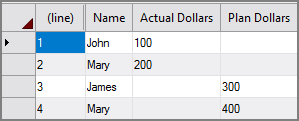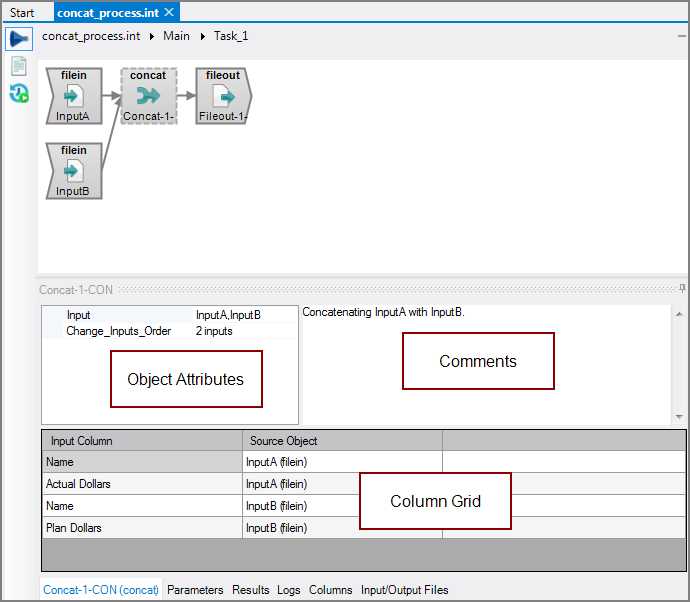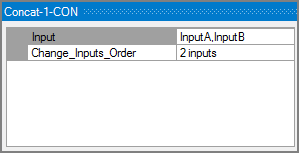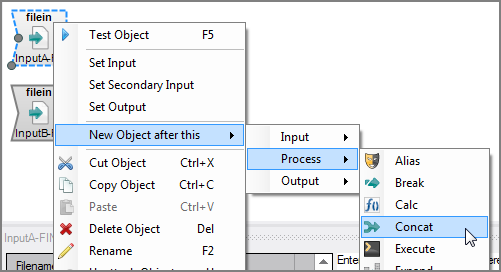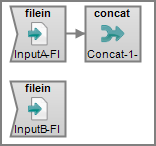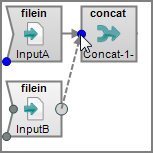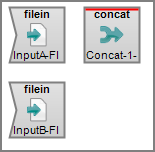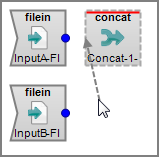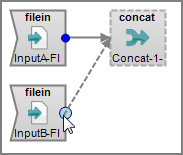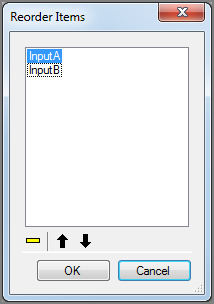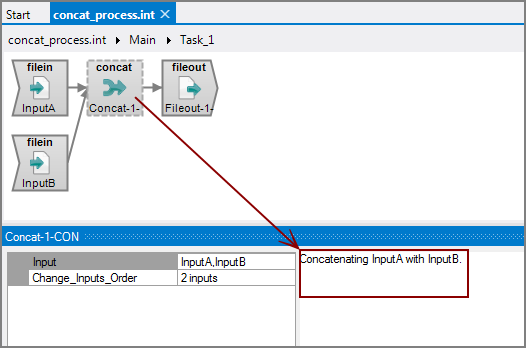The Visual Integrator (VI) Concat process object brings columns from multiple sources into the data flow input. If a column is requested in the output flow that does not appear in all the input flows, the value of that output column is null in the appropriate rows.
![]()
The Concat process object concatenates multiple input flows and passes a union of the input columns into the data flow.
The Concat process object has ![]() three panes where you set attributes.
three panes where you set attributes.
You set attributes for the Concat process object in the ![]() object attributes pane.
object attributes pane.
| Attribute | Description |
|---|---|
| Input |
Defines the objects from which the data flow arrives. Use one of the following methods to attach the Concat object to an input data flow object.
|
| Change_Inputs_Order |
Specifies the order of input processing. Defaults to the order that input objects were attached to the Concat process object.
|
Each object has an area where you can enter comments.
It is a DI best practice to enter a note for every object in a VI script. You can set a VI preference to give a warning for each object without a note.
The ![]() Concat object column grid displays the columns from the input data flow.
Concat object column grid displays the columns from the input data flow.
| Attribute | Description |
|---|---|
| Input Column |
Displays the name of each input column. This attribute is read-only. |
| Source Object |
Displays the name and object type of the source object. Double-click the Source Object for a column to change the task flow focus to that object. |
With the following input flows:
Input A:

Input B:

You get the following concatenated output:
